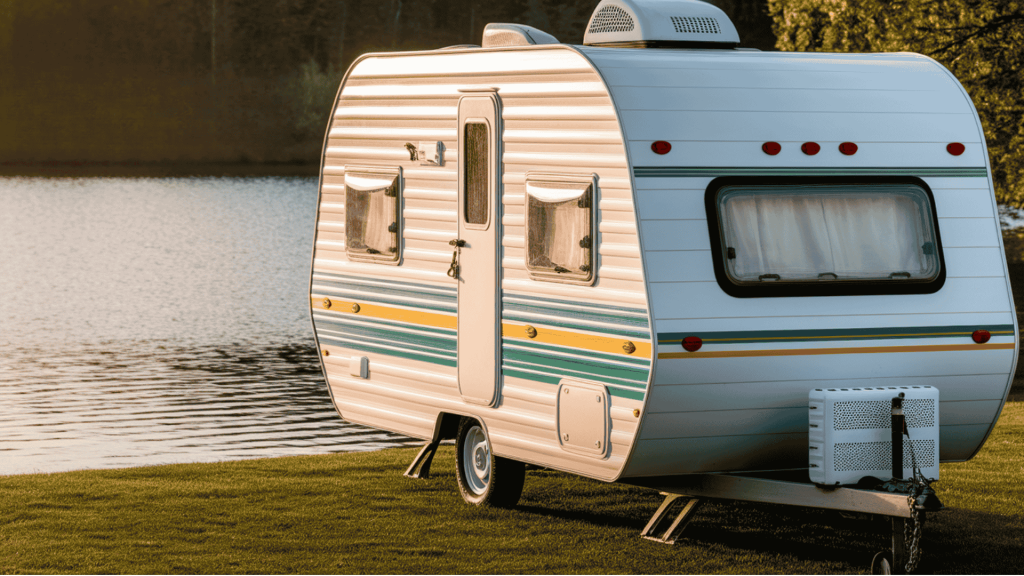You know, it’s wild how much thought actually goes into camper colors these days!
People used to just grab whatever was on the lot, but now folks are getting really strategic about it.
Take that classic forest green; campers love it because it keeps things cooler than dark colors and basically vanishes when you’re tucked into the woods.
Then there are those bright, cheerful yellows and oranges that just scream “adventure time!”
Sure, they might show every speck of road dust, but they make people smile at every rest stop.
What’s your camping vibe?
Are you more of a blend-into-nature type or a make-a-statement traveler?
Why Does Choosing the Right Exterior Paint Color Matter?
Picking the right camper color isn’t just about looks; it’s a game-changer for comfort and cash.
Light colors can keep your rig 10-15 degrees cooler in summer heat, while dark ones soak up every ray.
There’s even a psychology angle: blues and greens keep things zen, bright colors pump up the adventure vibes.
Then there’s resale value. Neutral tones appeal to everyone, but that neon purple might scare off future buyers.
Plus, heat-trapping dark colors can overwork your AC and cost more in repairs.
Smart color choice means better camping and better resale down the road.
Key Considerations Before Painting
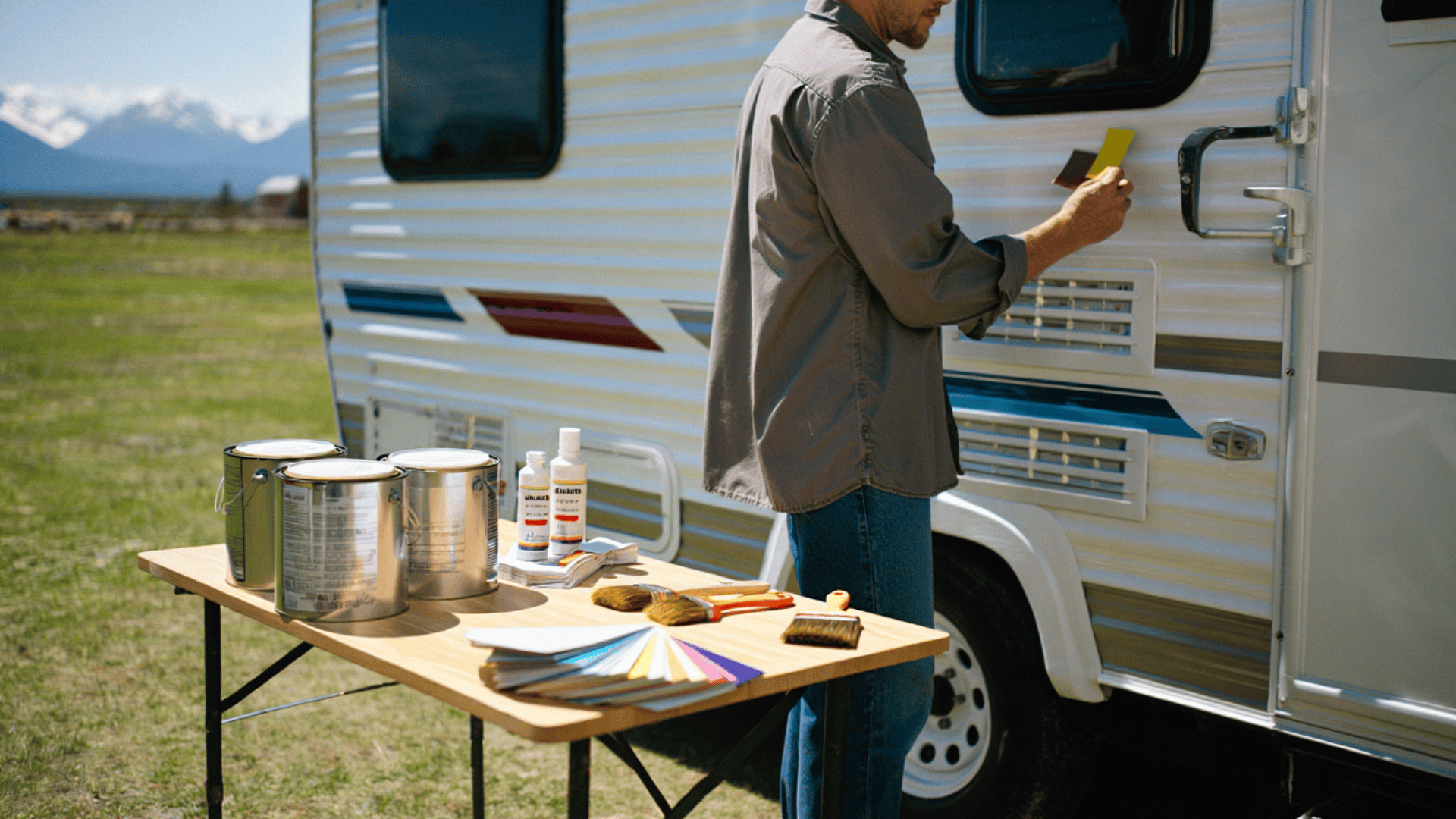
Before you crack open that first paint can, these key considerations will save you from costly mistakes and ensure a professional-looking finish.
- Surface Material: Aluminum needs etching primer, fiberglass requires flexible paint, and wood demands moisture-blocking formulas; one size doesn’t fit all.
- Climate and Exposure: UV-resistant and waterproof paints are non-negotiable for RVs facing sun, rain, and road salt year-round.
- Desired Finish: Matte hides imperfections but shows dirt; gloss looks sharp but highlights flaws; satin offers the best balance.
- Application Method: Spray gives smooth coverage but requires masking; brush/roller is forgiving but may show texture.
- Primer Necessity: Never skip primer—it’s your paint’s foundation for adhesion and longevity.
Getting these basics right up front means your paint job will look great and last for years of adventures ahead.
Best Paint Schemes for Your Camper Exterior
Selecting the perfect paint scheme makes an ordinary camper into a striking travel companion.
The right colors can reflect your personality while providing practical benefits for your crusades.
Here are five paint schemes that camper enthusiasts recommend for both style and function.
1. Classic White with Blue Accents
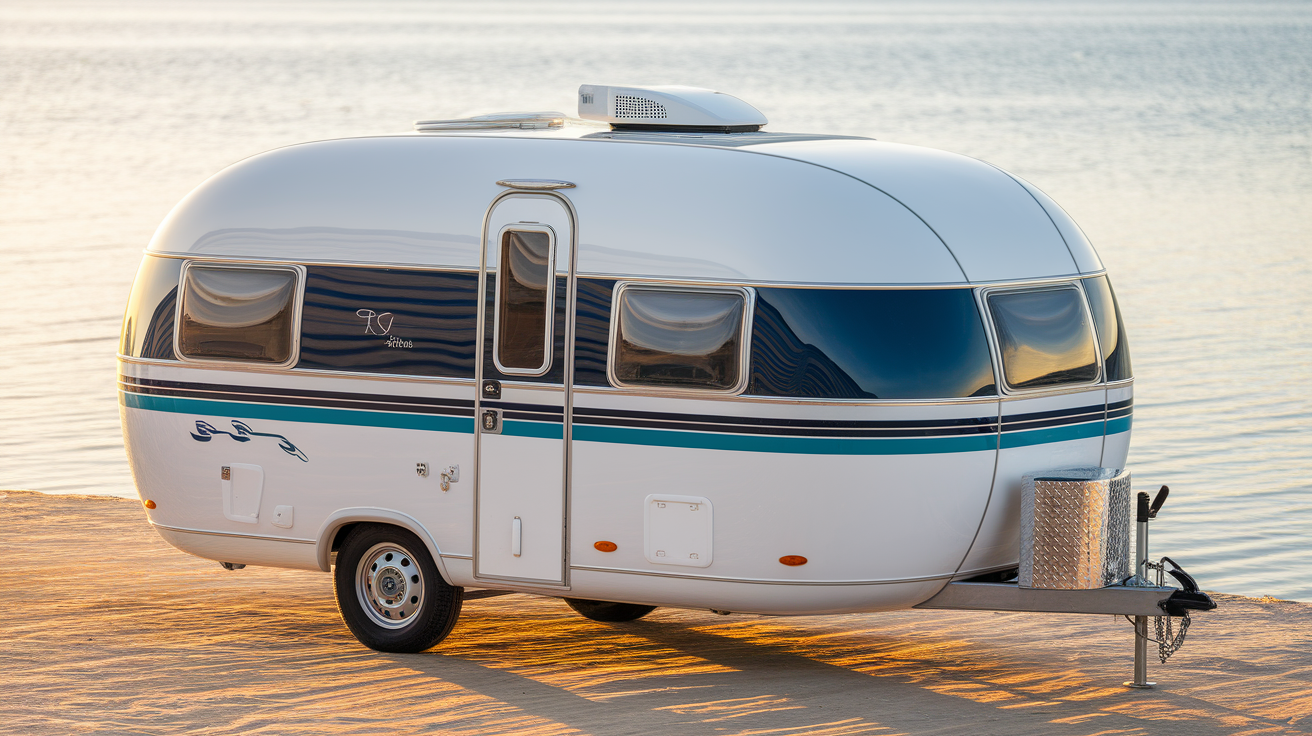
White serves as an excellent base color for any camper.
It reflects sunlight, helping keep the interior cooler during hot summer days.
Adding navy blue or teal accents creates a timeless nautical look that never goes out of style.
This combination works especially well near beaches or lakes, giving your camper a fresh, clean appearance that stands out without being too flashy.
2. Earth Tone Gradient
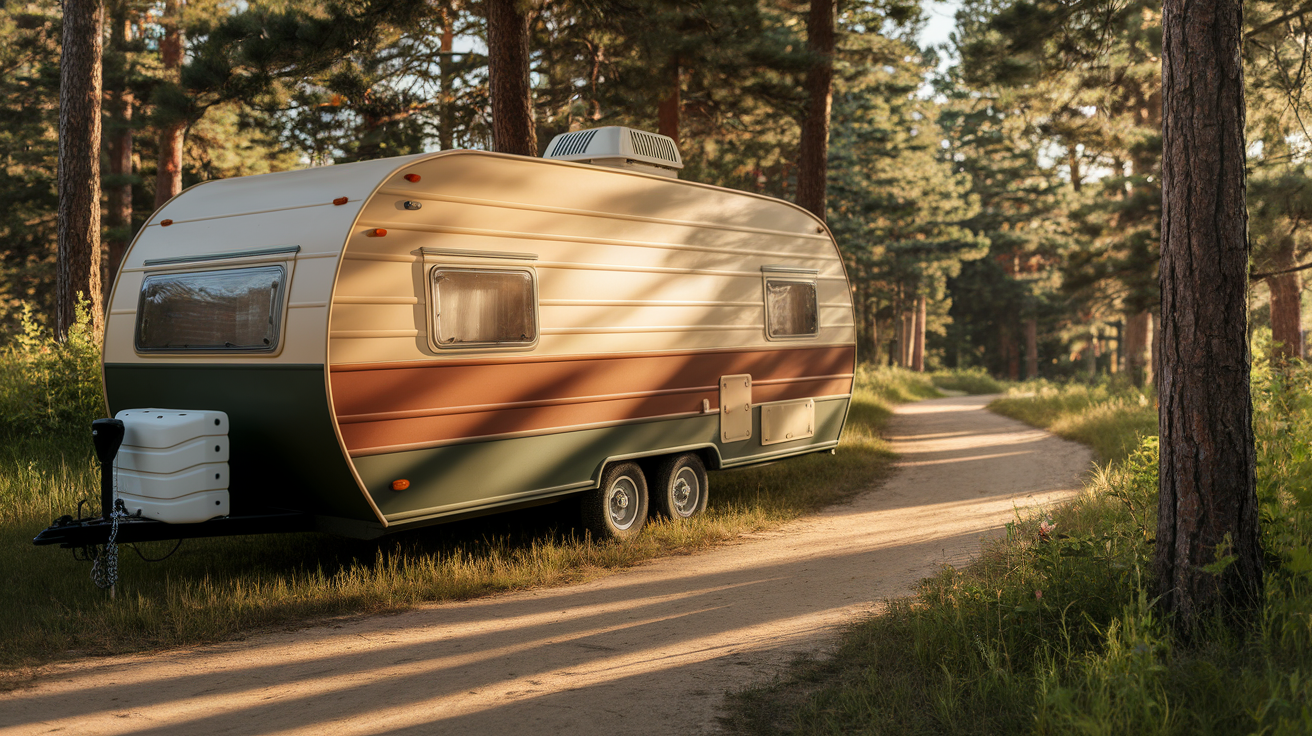
Natural brown, tan, and green tones help your camper blend with outdoor surroundings.
This scheme uses a gradient effect, with darker earth tones on the bottom fading to lighter shades toward the top.
This practical design disguises dirt and mud splatters from roads while creating a unified look in campgrounds.
Perfect for those who prefer a more subtle, nature-inspired aesthetic.
3. Desert Sunset Palette
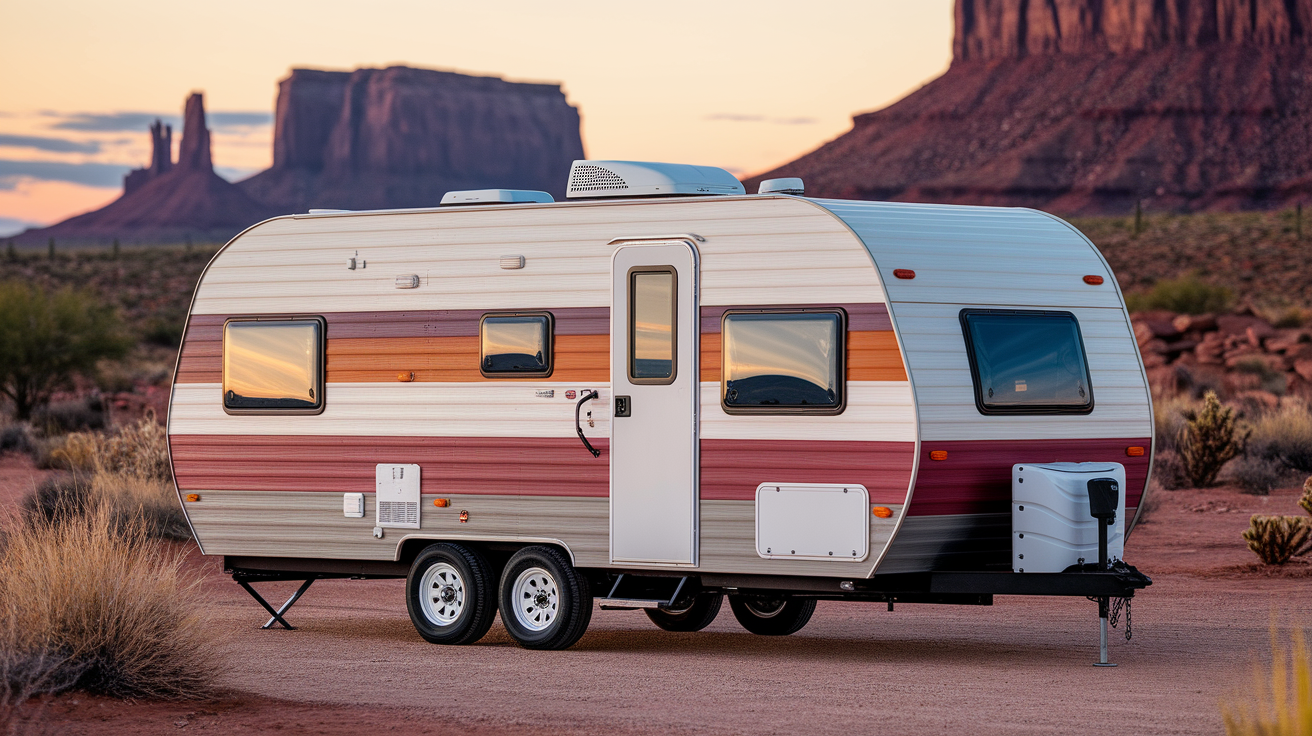
Inspired by southwestern landscapes, this scheme combines sandy beige as a base with accents in burnt orange, dusty red, and purple shades.
These warm colors create a welcoming exterior that captures the beauty of desert sunsets.
The lighter base still provides good heat reflection, while the colorful accents add personality without overwhelming the camper’s appearance.
4. Modern Monochrome
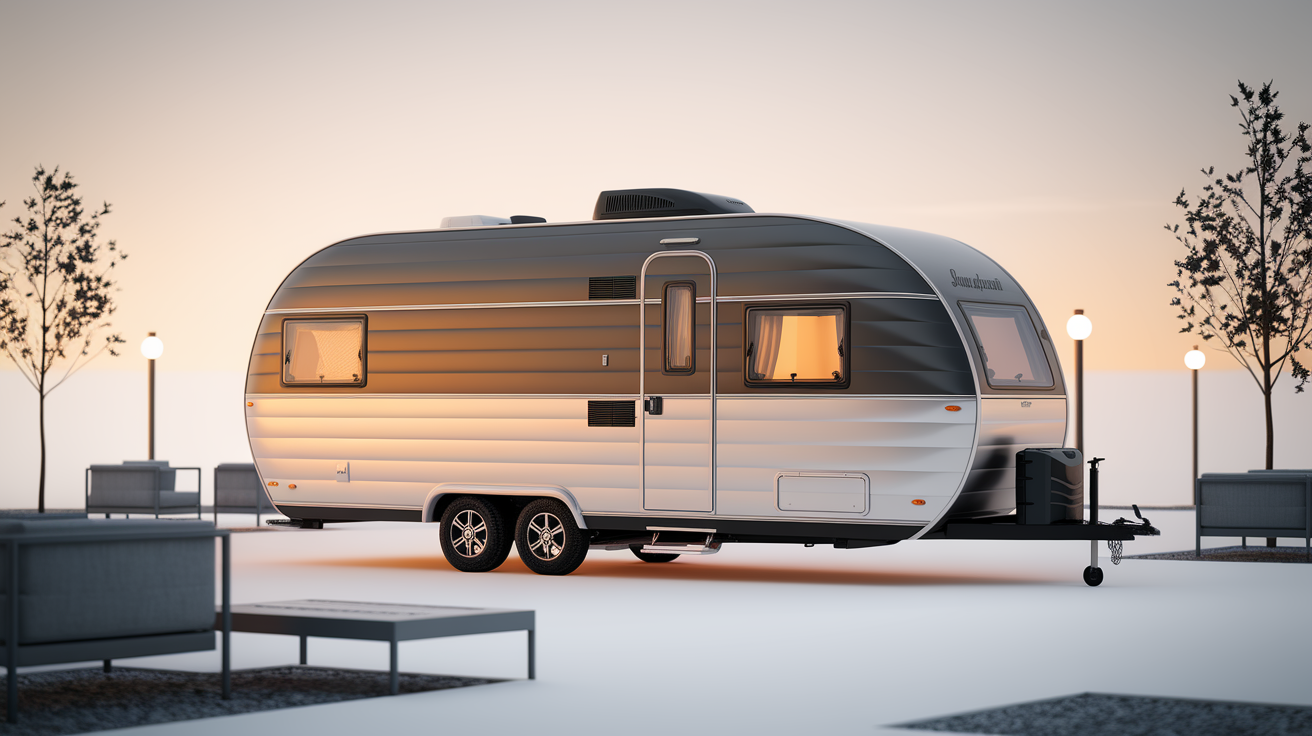
Sleek and stylish, this scheme uses varying shades of a single color—typically gray, blue, or green—to create a modern, minimalist look.
The darkest shade appears at the bottom (where dirt shows most), with progressively lighter shades moving upward.
This creates a contemporary appearance that appears intentional and designer-approved rather than plain.
5. Two-Tone Block Pattern
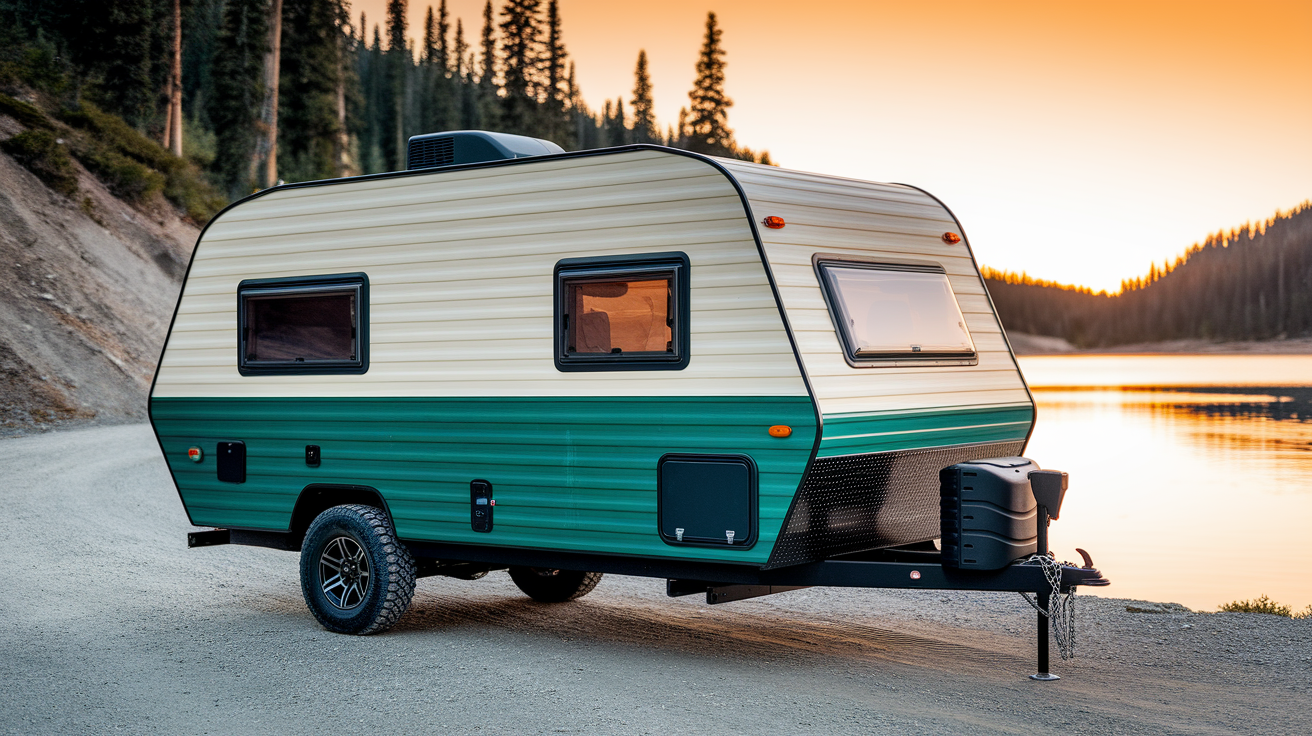
This bold approach divides the camper into two distinct color blocks—typically with a darker color on the bottom half and a lighter shade on top.
Popular combinations include charcoal/white, navy/cream, or forest green/tan.
This practical design hides road grime on the lower half while maintaining a cooler interior with the lighter upper portion.
How to Paint Your Camper Exterior Like a Pro?
Painting a camper exterior requires careful planning and proper techniques to achieve long-lasting results.
The right approach ensures your paint job withstands the elements while looking professional.
This guide walks through the essential steps to convert your camper’s appearance.
Tools and Materials Required
Here are all the tools and materials you’ll need before starting your camper painting project:
| TOOLS | MATERIALS |
|---|---|
| Heat gun | Exterior primer (suitable for fiberglass, e.g., Behr) |
| Glass scraper (with knife and flat sides) | Exterior paint (semi-gloss: Stucco Tan, Navy Blue, Burberry Teal, Maple Glaze) |
| 120-grit sandpaper | Oil-based paint for wheels (white) |
| Painter’s tape | Exterior black spray paint (for hubcaps, tongue, bumper) |
| Paint roller | Other color (if required) |
| Paintbrush (for trim and detailed areas) | Graffiti/Stickers/Hangings (if you want to decorate) |
Step-By-Step Guide to Painting Camper Exterior
Follow these simple steps to make your camper exterior with a smooth, professional-looking paint job and get it ready for your next family trip.
Step 1: Remove All Decals
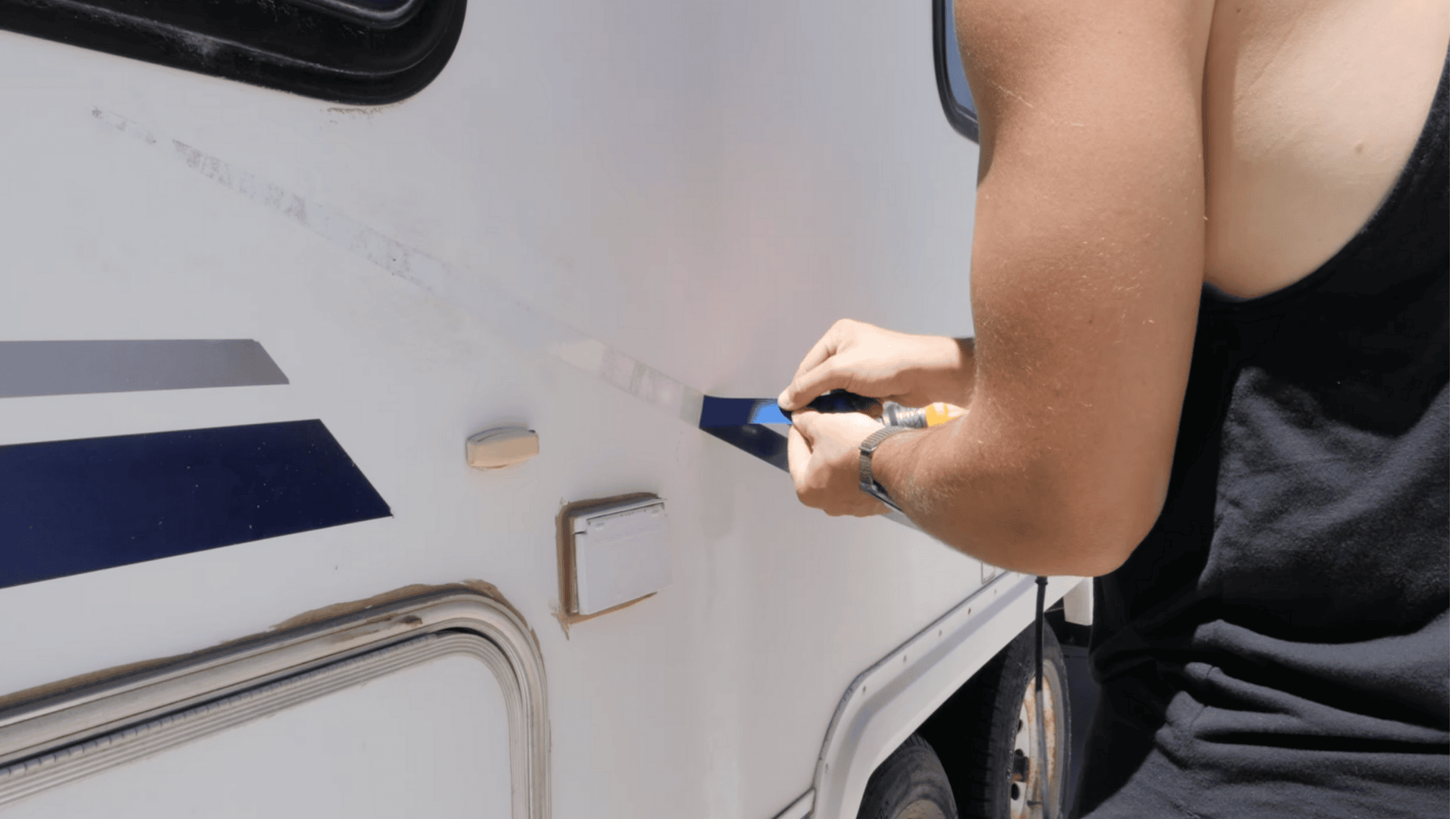
To remove old decals from the trailer, use a glass scraper and a heat gun.
The heat gun helps soften the adhesive, but the knife side of the scraper works best for peeling.
Continue until all decals are off, leaving no adhesive behind.
A clean surface is essential for sanding and priming later.
Step 2: Sand the Surface
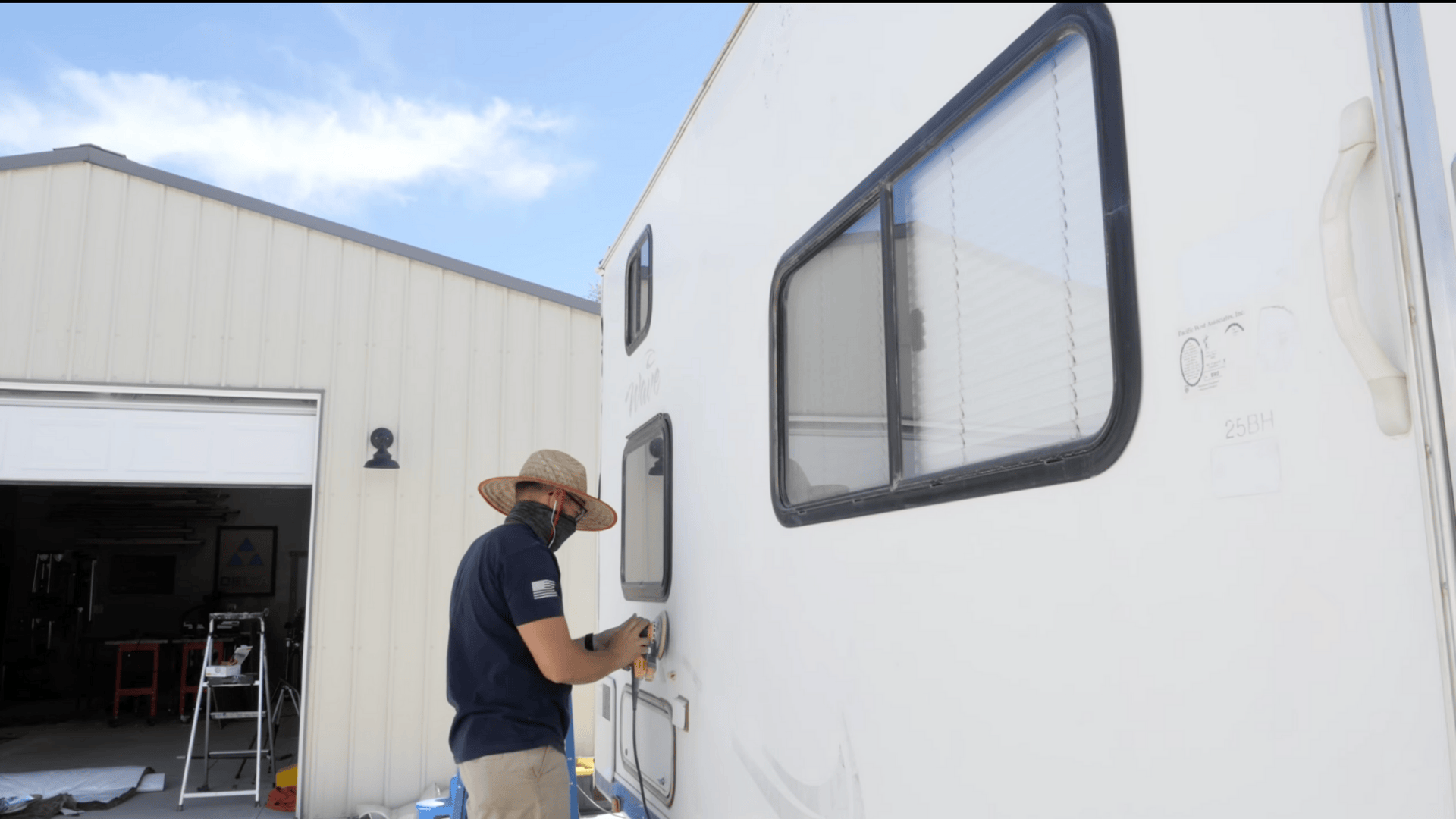
Use 120-grit sandpaper to scuff up the entire trailer surface.
This step gives the primer something to grip. Don’t press too hard, and pay special attention to any leftover decal residue.
Sanding also ensures that your paint finish will go on smoothly and evenly without flaking later.
A few hours of effort here go a long way in durability.
Step 3: Tape Off All Trim and Edges
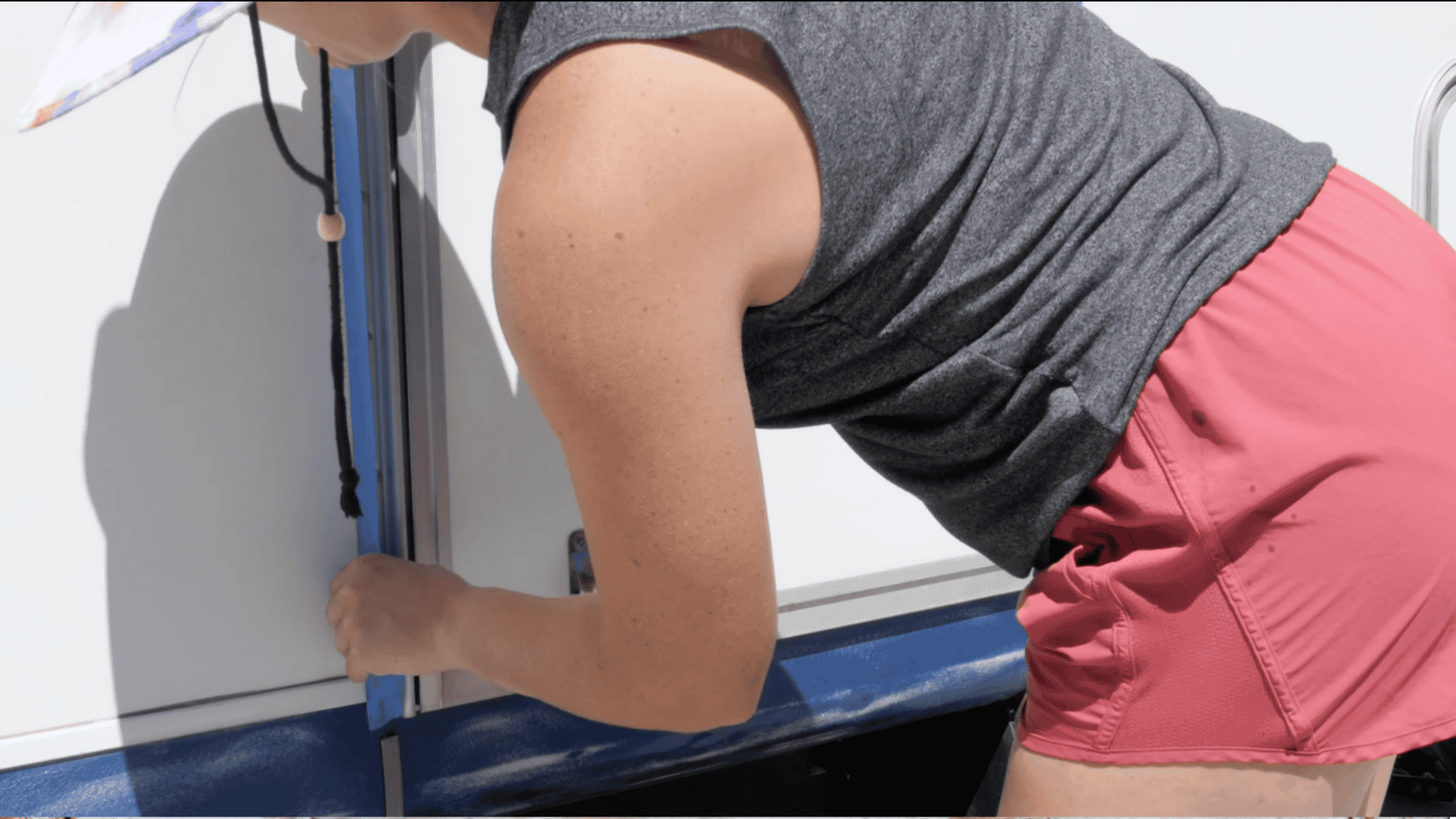
Tape around windows, trim, wheel flares, and any area you don’t want painted.
Be thorough.
Taping might take time, but it prevents messy lines and makes the final result look clean.
If you’re not confident in freehand brushing, taping is essential for sharp, pro-looking edges.
Precision here will save time on touch-ups later.
Step 4: Apply the Primer
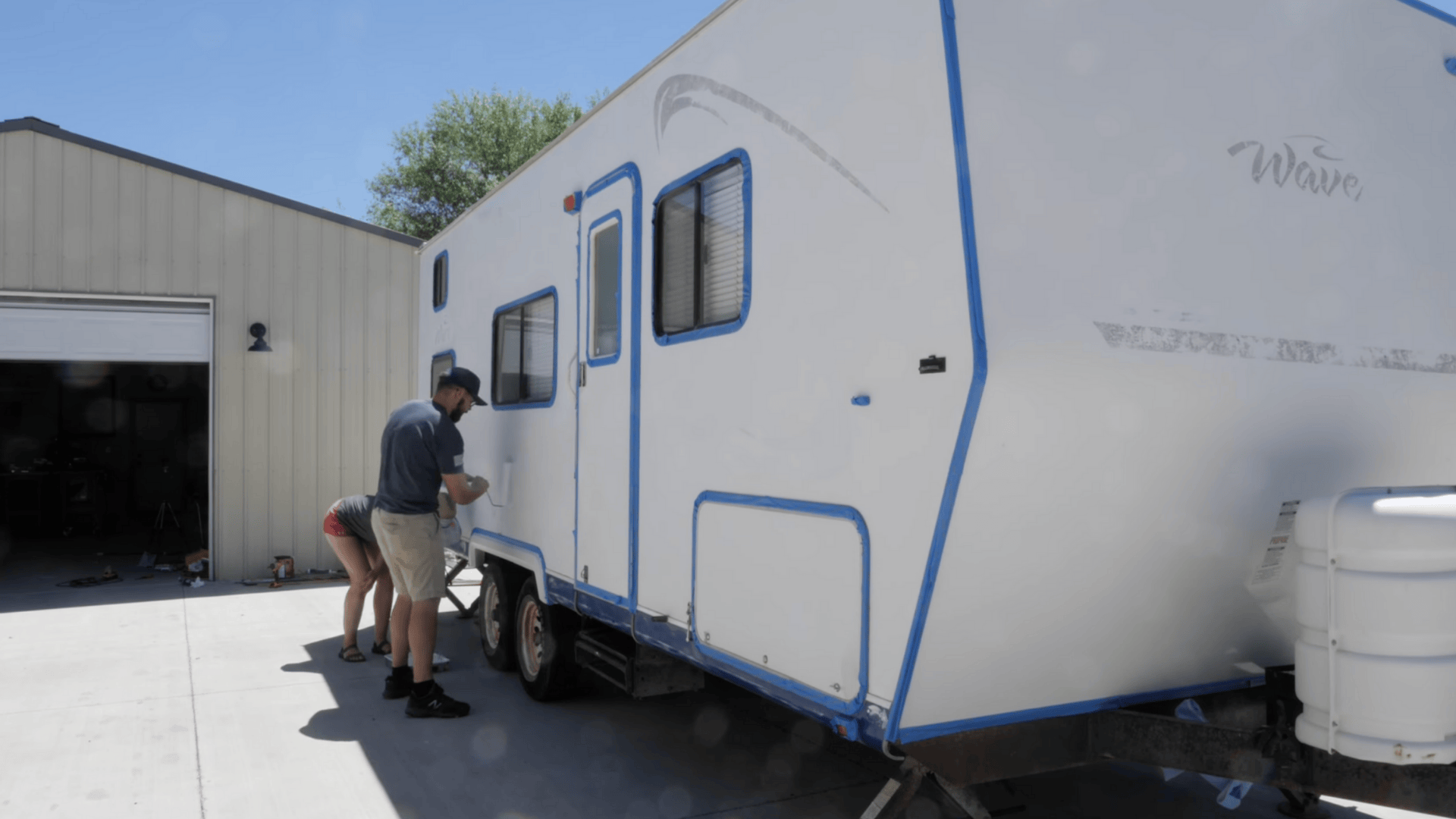
Use a fiberglass-safe exterior primer like Behr’s to coat the entire trailer shell.
This base layer helps the paint adhere better and last longer.
Apply evenly with a roller on large areas and a brush only where needed.
Allow it to fully dry before moving on to paint.
Primer also helps seal the surface and improve paint color richness.
Step 5: Roll On the Base Color
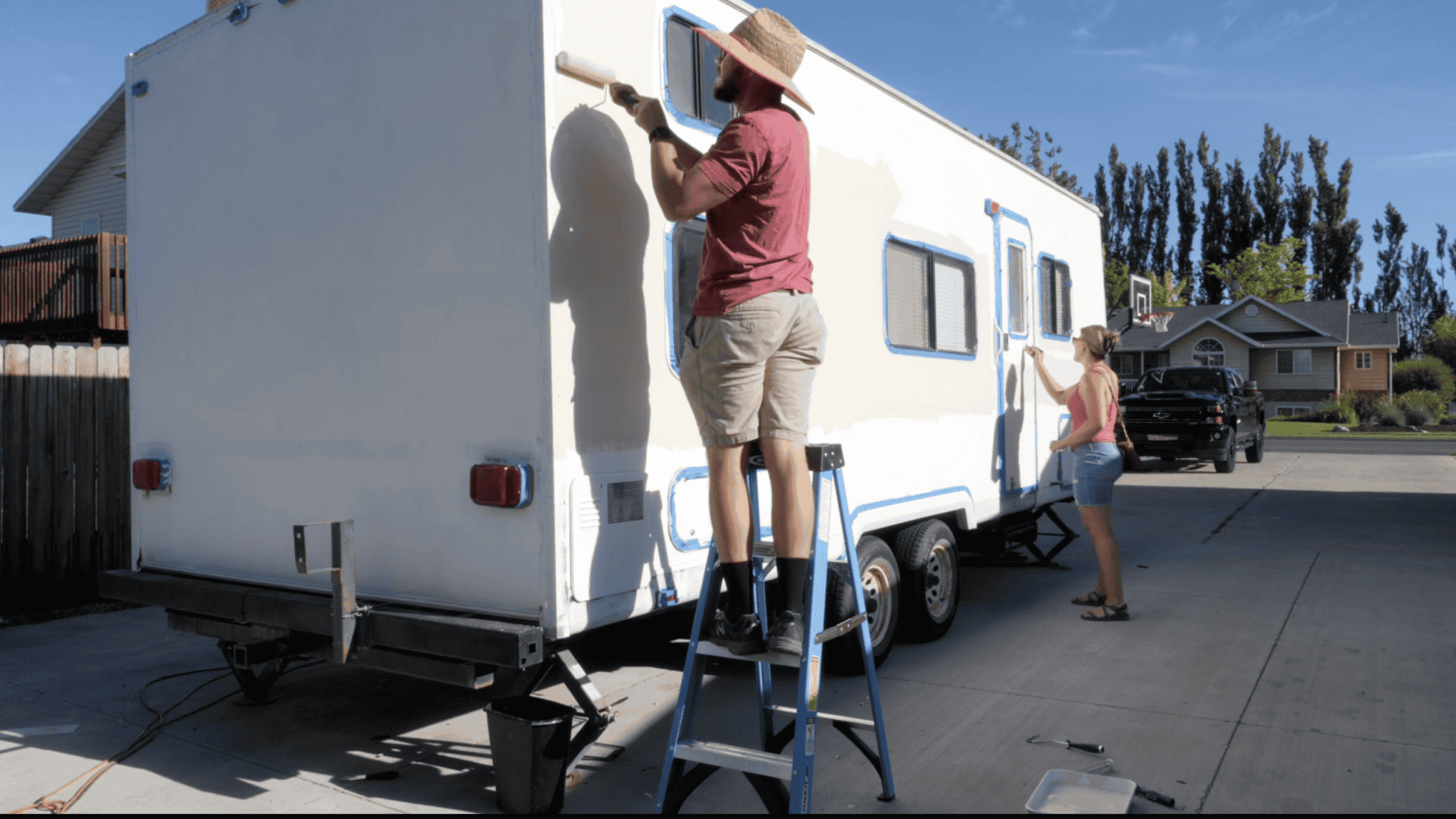
Begin with your base paint color.
Use a roller for most of the job and a brush for tricky edges.
Avoid overusing the brush to reduce visible strokes.
Apply two coats, ensuring complete and even coverage.
Let the paint dry thoroughly between coats.
This color will form the foundation for your entire look.
Step 6: Add Accent Colors
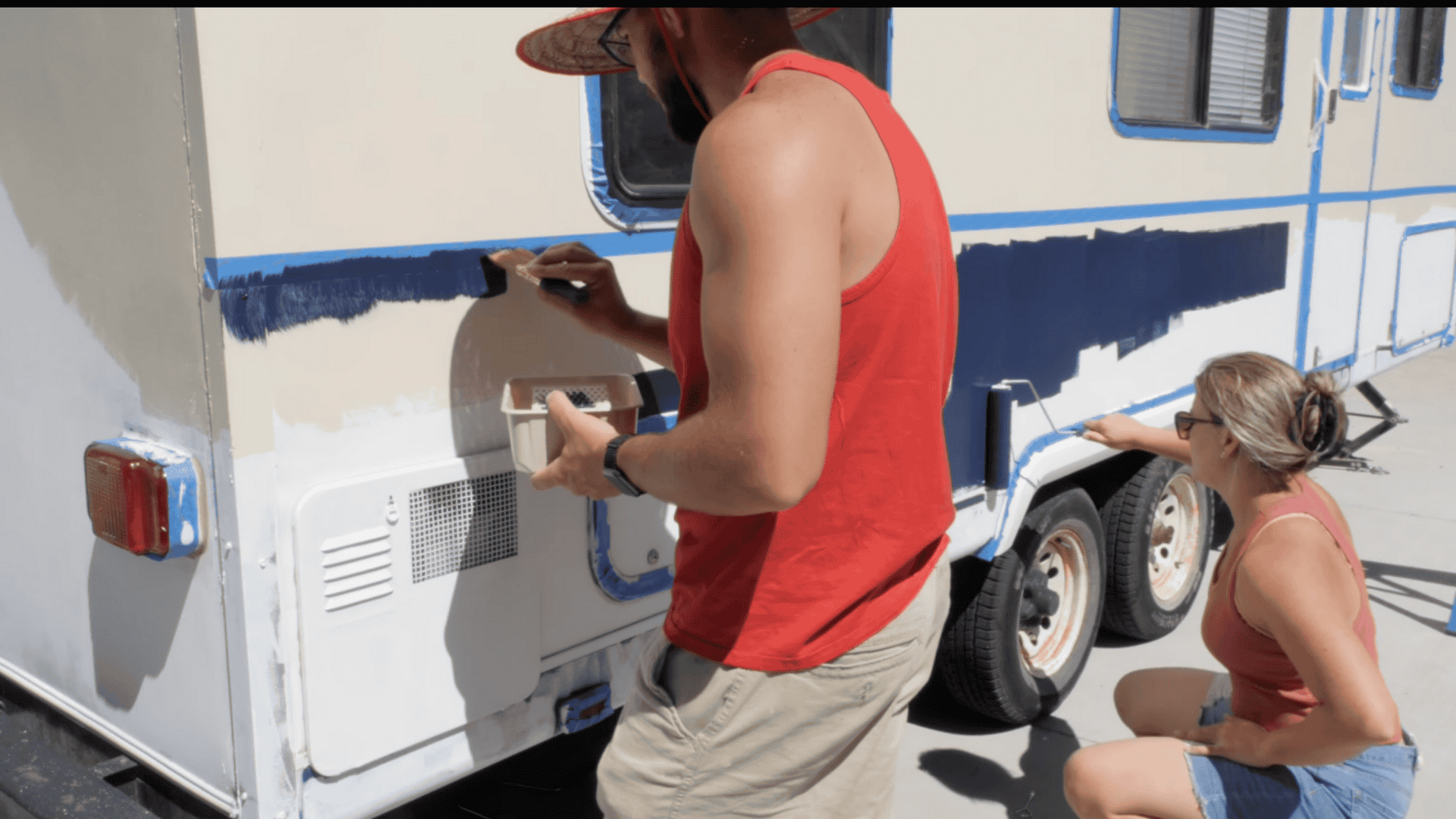
Tape off the areas for stripes or accents (e.g., Navy Blue, Burberry Teal).
Always paint downward from the tape to avoid bleeding.
Do two coats, then remove the tape while the paint is still wet to get clean lines.
Repeat for each additional color section. Adding accents gives your camper style and personality.
Step 7: Paint the Wheels and Trim
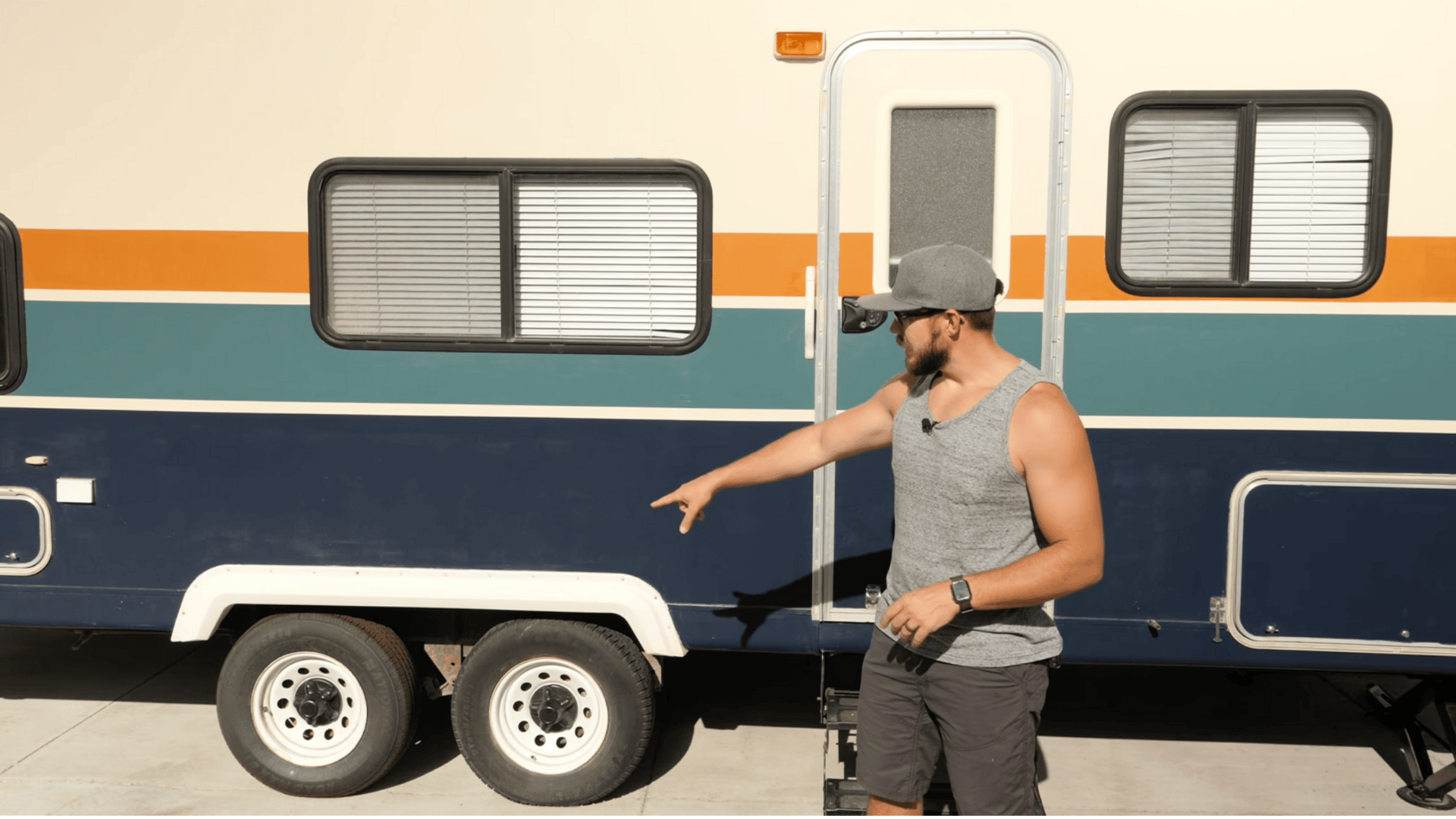
Prime the wheels with the same fiberglass primer.
Then, apply white oil-based paint using a brush.
Spray black paint on hubcaps, the trailer tongue, and bumpers for a refreshed look.
Sand metal parts lightly before painting to improve adhesion and reduce rust.
These final touches pull the whole makeover together.
Watch How It’s Done: Camper Exterior Painting
For more detailed information, check out the video by Jesse Mullen — Mullen The Maker.
Camper Paint Care Maintenance Tips
A killer paint job deserves killer maintenance—here’s how to keep your camper looking showroom-fresh through countless adventures:
- Regular gentle washing with mild soap removes road grime and bugs before they become paint enemies.
- UV-resistant wax every 3-4 months creates a protective shield against sun damage and oxidation.
- Quick touch-ups on chips and scratches prevent moisture from sneaking in and causing bigger problems.
- Immediate cleanup of tree sap, bird droppings, and bug splatter before they turn acidic and eat your paint.
- Smart parking in shade when possible, plus breathable covers for long-term storage.
Stick to these basics and your paint will stay vibrant mile after mile.
Your future self will thank you when that camper still turns heads at the campground years down the road!
Common Mistakes to Avoid
Nothing’s worse than stepping back to admire your freshly painted camper only to spot bubbles, streaks, or peeling paint.
These rookie mistakes can turn your weekend project into a costly do-over:
- Skipping prep work because dirty, unsanded surfaces guarantee paint failure within months
- Using house paint since it’s not built for road trips and weather beatings like specialized RV paints
- Wrong weather timing, when it’s too hot, cold, or humid, ruins how paint flows and cures
- Thick coat temptation, where multiple thin layers always beat one gloopy mess
- Rushing between coats when patience pays off with proper adhesion
Take your time with each step.
Your camper will thank you with years of a gorgeous, durable finish that handles whatever the road throws at it.
Final Notes
Painting your camper might seem like a big project, but it’s totally doable with some weekend warrior spirit and the right approach.
Classic white with blue accents or earthy forest greens do more than look good.
They actually protect your investment from serious weather damage.
Sure, it’ll take a few days and some elbow grease, but imagine pulling into that campground with a rig that looks like it just rolled off the lot.
Plus, with regular washing and waxing, that fresh paint will keep turning heads for years.
Your camper, your adventure, your style.
Ready to gear up your freshly painted camper?
Explore our Camping Setup & Essentials for must-have equipment and setup tips!

